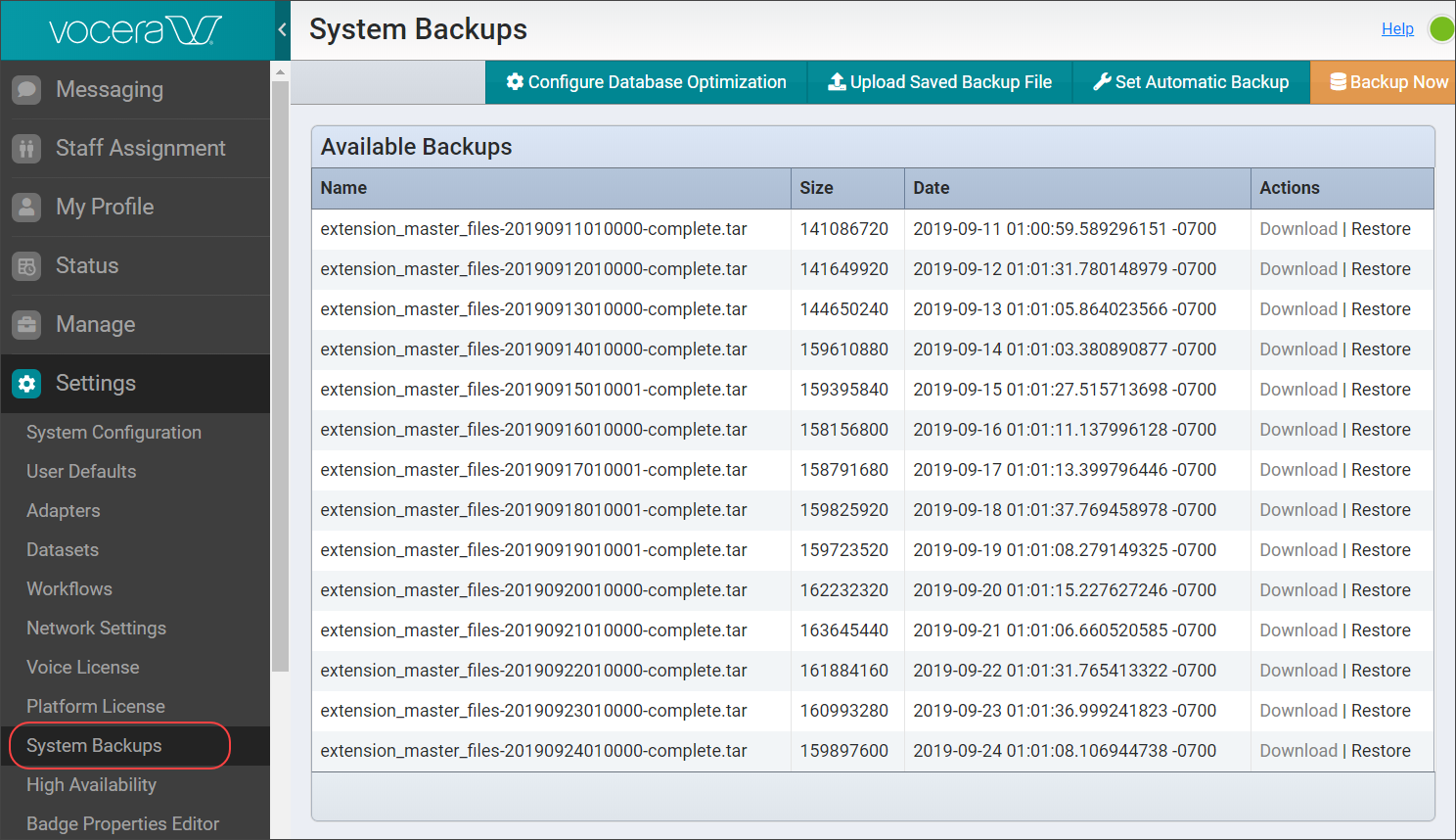You can create and manage backup files of the entire system, including stored data and configured adapters.
Regular backups are an important practice for any system storing critical information. Backups provide insurance against loss of information and configuration.
Backup files are snapshots of the Vocera Platform at the time of the system backup. A backup file includes all adapter and solution configuration files, as well as the voice and other data stored in the Vocera Platform.
Backup files are managed through the System Backups section in the Vocera Platform Web Console.

The complete system backup is a single TAR file that includes the system databases. You can restore a single backup to get the system back online after performing maintenance or a disaster recovery. All files needed for system restoration should be included in the daily backup snapshot.
When you are logged into the private IP address of a system associated with a high availability cluster, you cannot access System Backups.
Each system backup is stored on the Vocera Platform with the date and time of the backup. If a backup file is restored immediately after it is created, there are no functional changes to the system.
Vocera recommends keeping the system backup files in a secure location to protect data. The Vocera Platform Web Console provides the ability to export a backup to an external location for safe keeping. Adding password protection to the backup file is also recommended.
In System Backups you can perform a manual backup, or configure automatic backups. You can configure the system to automatically store backup files in a secure location, on a selected schedule. Once a backup file is created, you can perform the following tasks:
- Download the backup file for storage
- Upload a saved backup file to the system
- Restore a current backup file
The System Backup functionality also allows you to configure the default database optimization settings in order to reclaim storage. A vacuum process is performed periodically to optimize the database, especially on frequently-updated tables in the database. For more information, refer to Understanding Database Optimization.
